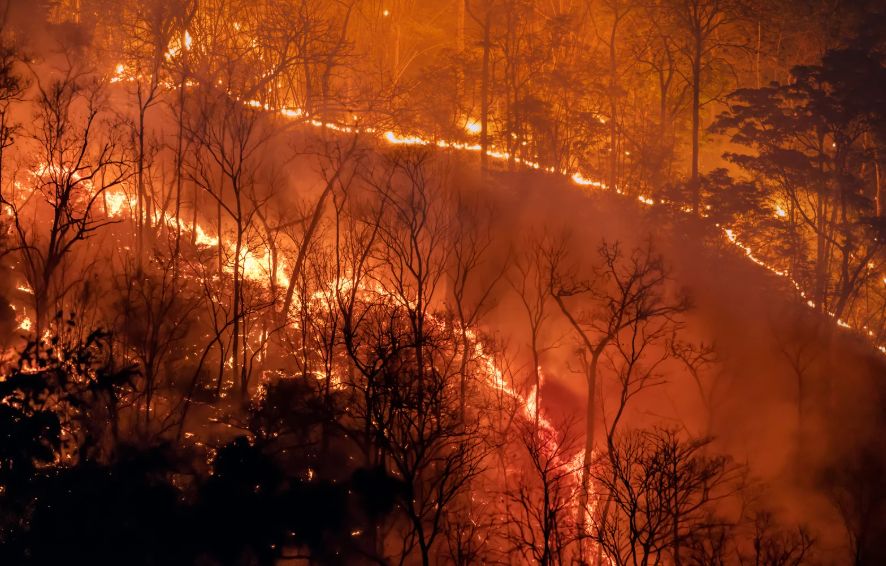State of Emergency in Los Angeles Amid Wildfires
Overview of Wildfire Threat in Los Angeles
Los Angeles is currently facing a dire situation as wildfires rapidly spread across the region, prompting officials to declare a state of emergency. The strongest of these wildfires, designated as the Palisades Fire, has burned nearly 3,000 acres, leading to the destruction of numerous homes and the displacement of tens of thousands of residents. The dangerous conditions are being exacerbated by the relentless Santa Ana winds, which are notoriously known for their ability to carry flames into new territories, putting more lives and properties at risk. As firefighters work around the clock, the factors of limited containment efforts present a complicated scenario for emergency response teams.
State Resources Mobilized
In response to the escalating crisis, Governor Gavin Newsom has mobilized state resources to bolster local firefighting efforts. This includes the deployment of additional personnel, aircraft for aerial firefighting, and financial support aimed at facilitating emergency response measures. The rapid response not only highlights the seriousness of the situation but also showcases the importance of coordinated efforts between state and local authorities during a disaster. The mobilization of these resources is crucial to enhance the capabilities of firefighters who are currently battling the elements in treacherous conditions.
Impact on the Community
The consequences of the wildfires are felt far beyond the flames and smoke. Shelters in Los Angeles County have reached full capacity, leaving many evacuees without a clear timeline for when they may return to their homes, if at all. The uncertainty surrounding the evacuation has amplified the emotional and psychological toll on residents who are already facing the challenges of displacement. Additionally, the wildfires have resulted in significant disruptions to daily life, including road closures, the cancellation of school activities, and a considerable decline in air quality, which has turned parts of the city into a haze of smoke.
Prolonged Evacuations and Firefighting Challenges
Emergency responders are advising residents to prepare for extended evacuations, particularly as meteorologists forecast that the intense Santa Ana winds may persist for at least another day. These winds not only complicate firefighting efforts but also threaten to spread the flames further into densely populated areas. The local fire department has characterized the current situation as “unprecedented,” indicating that the combination of wind gusts and existing drought conditions has made this wildfire especially dangerous. As a result, firefighting crews are prioritizing not just asset protection, but also critical infrastructure and, most importantly, the lives of residents caught in the path of the fire.
Community Solidarity and Relief Efforts
As the fires continue to wreak havoc, local organizations and community volunteers have stepped forward to extend their helping hands to those affected. Initiatives are underway to distribute food, water, and essential supplies to evacuees and affected residents. Additionally, donations are pouring in from various areas across the state, showcasing the resilience and unity of the community in times of crisis. Local heroes, including firefighters, emergency responders, and volunteers, are working tirelessly to ensure that those impacted by the disaster receive the support they need during this challenging period.
Broader Implications of Natural Disasters
This wildfire crisis serves as a stark reminder of the climatic challenges that regions like Los Angeles are increasingly facing. With climate change contributing to prolonged dry seasons and increased wind patterns, areas prone to wildfires will continue to see heightened risks. The need for comprehensive disaster preparedness, including community awareness and infrastructure resilience, has never been more urgent. As California experiences severe weather conditions, it’s critical for both residents and officials to focus on long-term strategies that address these environmental shifts and potential emergency situations.
Conclusion
The ongoing wildfires in Los Angeles exemplify the serious threats posed by natural disasters intensified by climatic conditions. With thousands of residents evacuated and state resources mobilized, the priorities remain in safeguarding lives and critical infrastructure. Community efforts to alleviate the suffering of those affected highlight the strength and solidarity present in times of crisis. Moving forward, the lessons learned during this catastrophic event must inform local and state disaster strategies to foster resilience against future wildfires. By investing in preparedness, infrastructure, and community support systems, Los Angeles can better navigate similar challenges in the years to come.
FAQs
What is the Palisades Fire?
The Palisades Fire is one of the largest wildfires currently affecting the Los Angeles region, burning nearly 3,000 acres and resulting in significant damage, including destroyed homes and displaced residents.
Why was a state of emergency declared?
A state of emergency was declared to facilitate the mobilization of state resources and coordinate local response efforts to contain and manage the wildfires effectively.
Are evacuation shelters still available?
As of now, shelters in Los Angeles County are at capacity, with limited accommodations for new evacuees. Residents are advised to stay informed about available resources and updates from local authorities.
What can residents do to prepare for evacuations?
Residents are encouraged to prepare for extended evacuations by packing essential belongings, creating an emergency kit, and staying updated with information from local emergency services.
How can I help those affected by the wildfires?
Community members can support those affected by donating to local relief organizations, volunteering time to aid in shelters, or providing essential supplies such as food and water. Contributions help ensure that evacuees receive the assistance they need during this difficult time.

